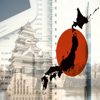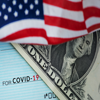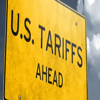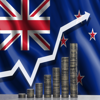Insights
Harnessing Change-Monthly Insights: Asian Equity (June 2025)
On the ground in Asia-Monthly Insights: Asian Fixed Income (June 2025)
Sharia bonds: an overlooked diversification opportunity?
New Zealand Equity Monthly (June 2025)
New Zealand Fixed Income Monthly (June 2025)
Navigating Japan Equities: Monthly Insights From Tokyo (July 2025)
QE, It Just Won’t Go Away...
Global Investment Committee’s outlook: narrowing growth differentials
Balancing Act Monthly Insights: Global Multi-Asset (June 2025)
On the ground in Asia-Monthly Insights: Asian Fixed Income (May 2025)
FOMC: projections highlight heightened uncertainty in rate outlook
Exceptionalism, Goldilocks, TACO and FOMO
One hundred and fifty-three quarters have passed since the rather “political” Alan Greenspan was appointed the Chairman of the Federal Reserve. According to our Demand Pressure Index, which seeks to provide a better estimate of the output gap in the economy, the economy has been run “hot” with positive demand pressure (i.e. demand exceeded sustainable supply) in ninety-nine of those post 1986 quarters.
New Zealand Equity Monthly (May 2025)
New Zealand Fixed Income Monthly (May 2025)
Harnessing Change-Monthly Insights: Asian Equity (May 2025)
Japan plays the long game to keep structural recovery intact
Navigating Japan Equities: Monthly Insights From Tokyo (June 2025)
Balancing Act Monthly Insights: Global Multi-Asset (May 2025)
On the ground in Asia-Monthly Insights: Asian Fixed Income (April 2025)
Trump’s first 100 days: a new economic regime takes shape
Harnessing Change-Monthly Insights: Asian Equity (April 2025)
We are all Bayesians now: why the US bond market is pivotal
Global Equity Quarterly (Q1 2025)
Balancing Act: Global Multi-Asset Quarterly (Q1 2025)
New Zealand Equity Monthly (April 2025)
New Zealand Fixed Income Monthly (April 2025)
Navigating Japan Equities: Monthly Insights From Tokyo (May 2025)
Financing nature at scale
Balancing Act Monthly Insights: Global Multi-Asset (April 2025)
Are Foreign Investors Really Fleeing US Assets?
Understandably much of the popular market commentary has centred around the possible “Repatriation Trade” and in particular is has focussed on possible flows out of the UST by foreign investors. There have also been stories of some selling of US equities and private credit instruments, all of which sound quite alarming given the USA’s hefty net Foreign Liabilities Position and reliance on foreign capital to cover its deficits.
Harnessing Change-Monthly Insights: Asian Equity (March 2025)
Global Investment Committee review: scenarios for a less certain global outlook
Isolation day: the geopolitical impact of Trump’s tariffs on the world
Chinese property developer bonds: reflecting on the sleeper rally and what lies ahead
On the Ground in Asia-Monthly Insights: Asian Fixed Income (March 2025)
New Zealand Fixed Income Monthly (March 2025)
Impact of additional US tariffs on Asia rates and credit markets
New Zealand Equity Monthly (March 2025)
Navigating Japan Equities: Monthly Insights From Tokyo (April 2025)
US tariffs: the high-stakes games begin
In response to Liberation Day tariffs
ASEAN’s investment potential in a Trump 2.0 world
President Trump May Know The Lesser of Available Evils
The chart below is by no means perfect in terms of its specific execution; global price indices are few and far between but it serves to make the point that, since the advent of “Globalization” during the early – mid 1990s, goods prices have lagged service sector prices by a considerable margin. Persistently positive demand versus output gaps in the West resulted in equally persistent rates of service sector and non-traded inflation, while North Asia’s output & employment maximizing pricing behaviour contained goods prices for structural reasons.
Sustaining the future: the ongoing case for sustainable bonds
Balancing Act Monthly Insights: Global Multi-Asset (March 2025)
Global Investment Committee’s outlook: regime shift to a more volatile world
On the Ground in Asia-Monthly Insights: Asian Fixed Income (February 2025)
Harnessing Change-Monthly Insights: Asian Equity (February 2025)
Vietnam ascending
End of “lazy” earnings era may bring fresh opportunities for stock pickers
New Zealand Fixed Income Monthly (February 2025)
New Zealand Equity Monthly (February 2025)
Navigating Japan Equities: Monthly Insights From Tokyo (March 2025)
A year later: five reasons we're still bullish on Japan
Global Equity Quarterly (Q4 2024)
Trust. Will the Old World Survive the New Regimes?
The focus in the media and amongst most analysts has centred around tariffs and a possible fiscal tightening in the USA – although we would argue that on a cash basis the latter is already happening quite aggressively. In some cases, it seems that even where the government has notionally incurred expenses, it does not seem to have distributed funds to its suppliers.
Balancing Act Monthly Insights: Global Multi-Asset (February 2025)
What the return of interest rates means for Japan
Harnessing Change-Monthly Insights: Asian Equity (January 2025)
On the Ground in Asia-Monthly Insights: Asian Fixed Income (January 2025)
New Zealand Equity Monthly (January 2025)
New Zealand Fixed Income Monthly (January 2025)
Navigating Japan Equities: Monthly Insights From Tokyo (February 2025)
Balancing Act: Global Multi-Asset Quarterly (Q4 2024)
The Fed takes a leaf from the BOJ’s book and applies gradualism
Balancing Act Monthly Insights: Global Multi-Asset (January 2025)
BOJ hikes amid trade uncertainty: focus on AI’s indirect role in risk reduction
How Japan can safeguard against US tariffs
Harnessing Change-Monthly Insights: Asian Equity (December 2024)
On the Ground in Asia-Monthly Insights: Asian Fixed Income (December 2024)
Politics, governance reform and engagement opportunities in Japan equities
Navigating Japan Equities: Monthly Insights From Tokyo (January 2025)
Why We Should All Pay Attention to NZ
Despite its small size and geographic location, New Zealand has led the World in a number of fields – physics, Postwar economic theory (Bill Phillips was born in NZ), inflation targeting (amongst the first to make this a statutory target), globalization, and of course in many sports.
2025 GLOBAL OUTLOOK
With their central banks bringing interest rates down from previously restrictive settings, 2024 has been the year when most of the world’s economic players have finally begun to experience an easing of monetary policy. In each instance, these reflected confidence that inflation, or perhaps more accurately inflation expectations, had reached a desired level, or were at least on a path towards it.
Balancing Act Monthly Insights: Global Multi-Asset (December 2024)
Fed and BOJ in a wait-and-see mode amid uncertainty over US fiscal and trade policies
Yanagi Model in practice: analysis of TOPIX firms links ESG factors to shareholder value
New Zealand Fixed Income Monthly (November 2024)
New Zealand Equity Monthly (November 2024)
Trust in Societies Underpins the Value of Money
Very thoughtfully, my father presented me with a compendium of newspaper front pages covering all 60 of my birthdays. There were two sections, one for a “broadsheet” and one for a “tabloid”. In 1964, the front page of the broadsheet was dominated by an informed discussion about the enacting by a Labour Party Chancellor of a shock 200 b.p. rise in the UK Base Rate in order to stabilize the pound.

































































































